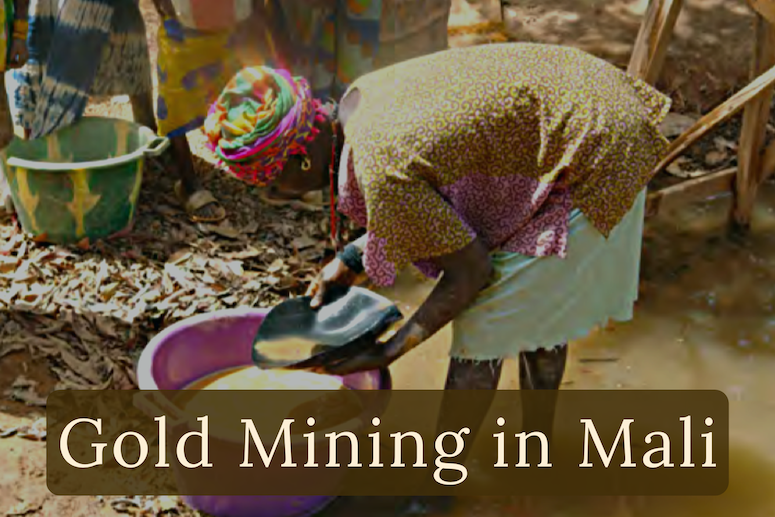
The attention of gold miners is turning towards Mali. This African country is fast becoming one of the major gold producers in the world. It’s already the third-largest gold producer in Africa, only preceded by Ghana and South Africa.
In the past decade or so, Mali has increased gold production. New gold discoveries, extraction, and billion-dollar investments have become common news in the country. Even so, experts are more optimistic about the future because vast regions in the country are still unexplored. Experts believe there might be more good news in this field soon.
There are plenty of reasons for gold prospectors and artisanal miners to cheer in Mali. In several areas, placer gold and small nuggets could be found close to the surface. Gold hunters just need basic placer equipment and metal detectors to try their luck.
History of Gold Use, Discoveries, and Mining in Mali
It’s believed that gold was known, mined, and used in the country for thousands of years. The event drew the attention of the world towards Mali happened in 1324. Kankou Moussa – the emperor of Mali back then – made his pilgrimage to Mecca in 1324. He didn’t go empty-handed. The emperor of Mali took eight tons of gold during his journey.
Although small scale mining of gold must have taken place in Mali since medieval times, serious effort to extract gold was absent. Large-scale gold mining was non-existent for many centuries in the country. Although there are many reasons, three main causes deterred gold discoveries and mining activities: internal violence, political and economic instability.
Even now, the situation in Mali isn’t conducive for outsiders to discover and mine gold. Security is poor, infrastructure is limited, and the country has one of the lowest life expectancies.
For decades, geologists were aware of large gold deposits in Mali. But, due to the reasons just mentioned commercial gold mining only began in 1984.
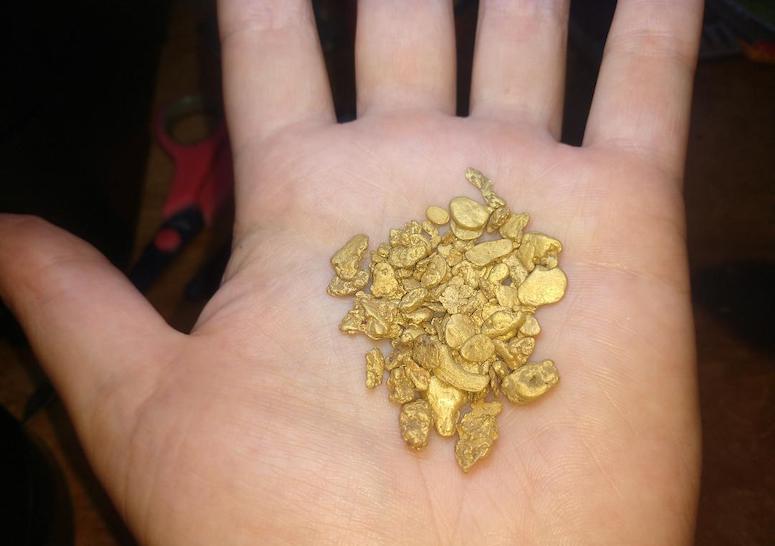
Artisanal Mining in Mali
Artisanal mining is widely practiced in the country. There are many challenges for outsiders to come and mine in Mali, but for local villagers, prospecting for gold is one of the few sources of income available to them.
Poverty and unemployment are rampant in Mali. Hence, many try their luck looking for placer gold in rivers. Large gourd shells or other traditional placer mining equipment and methods are used to extract gold particles from sand and gravel in the river beds.
Panning gold from the rivers has also increased conflict in the region. The locals complain that the use of mercury pollutes water meant for drinking and agriculture. Moreover, miners divert water to extract gold. This has led to a decrease in the water supply to agricultural lands in the region.
Growing conflict forced the government to ban artisanal mining during the months when water is most needed for cultivation. The move has only resulted in illegal mining and underreporting of gold extraction.
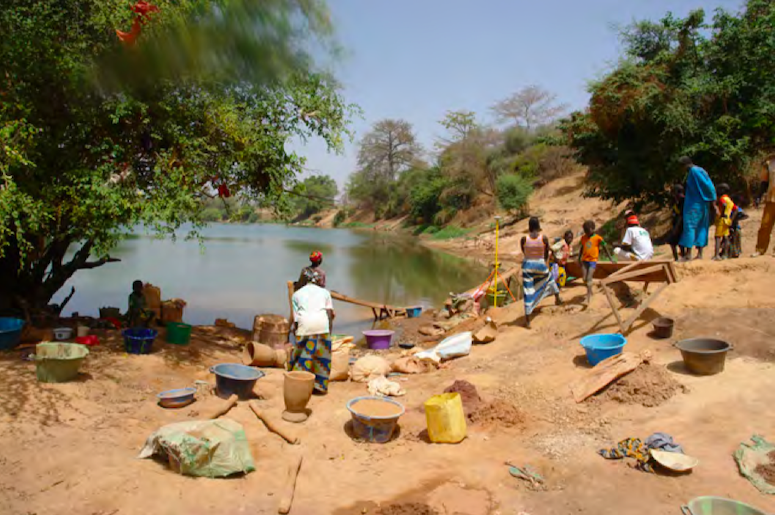
A small artisanal gold mining operation on the Faleme River, Mali.
Major Gold Mines in Mali
The arid landscape that makes up large parts of the country is inhospitable for mining operations. Some of the gold-bearing lands are far from cities and towns, making mining and prospecting quite difficult.
Experts estimate about 133 areas with a considerable amount of gold. Out of these, only six have been mapped out. This clearly shows that not even a fraction of the total gold reserves in Mali is mined.
At present, there are only a small handful major gold mines in Mali. The Sadiola and Morila are two large mines that contribute more than 80% of the yellow metal produced in the country.
Much of the yellow metal currently produced in the country comes from two regions. First is the Tabakoto-Baroya region, which is not far from the capital city Bamako.
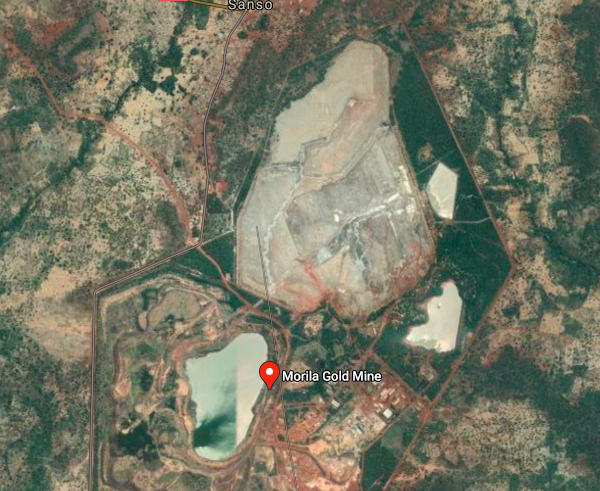
Morila Gold Mine: One of the largest gold mines in Mali, Morila was opened by AngloGold Ashanti. The mining company along with the government of Mali managed the operations until 2008. Then the management of the mine changed hands and since then Morila became a joint venture between the government and Randgold Resources. Until 2009, Morila was operated as an open-pit mine. Later, underground operations began to extract the low-grade gold deposits in the area.
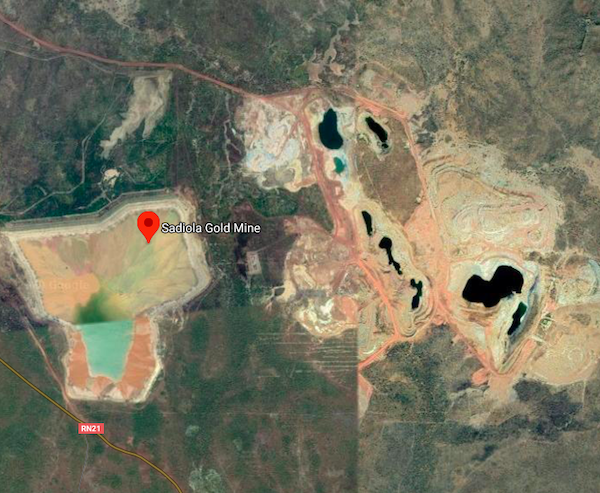
Sadiola Gold Mine: Started in 1996, Sadiola is also an open-pit mine. The mine was started by AngloGold but is currently managed by the AngloGold Ashanti Group, which was formed by the merger of AngloGold and Ashanti Goldfields Corporations in 2004. The Mali government and the Iamgold Corporation have a stake in the gold mine.
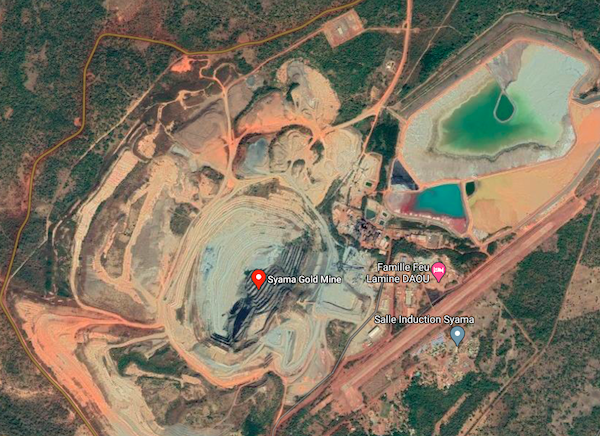
Syama Gold Mine: located 30 miles north of the Cote d’Ivoire border. This huge mine complex operation extracts gold by crushing, milling and leaching gold from ores. The reserves are estimated at 8.3 million ounces.
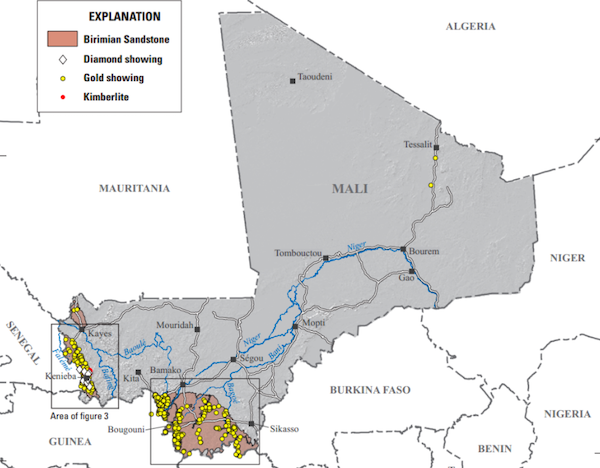
Mining Regions: Map showing major gold occurrences and the two major mining regions in Mali, Africa.
